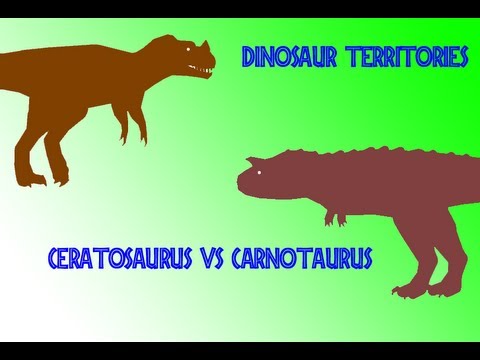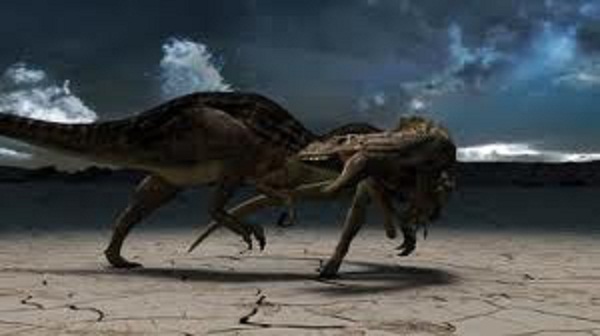
ceratosaurus vs Carnotaurus Facts
Carnotaurus was a large predatory dinosaur. Only one species, Carnotaurus sastrei has been described so far. It lived in Patagonia, Argentina during the Campanian or Maastrichtian stage of the Late Cretaceous. It was a large theropod, about 8 meters (26 feet) long, weighing between 1,488 kg and 2,626 kg (1.6 to 2.9 short tons), depending on the estimation method. The most distinctive features of Carnotaurus are the two thick horns above the eyes, and the forelimbs are greatly reduced with four basic digits, though only two ends in the middle of the finger bones, while the fourth splint-like and may have represented an external spur. The fingers themselves were fused and move, and have no claws. It is also characterized by an unusually long neck (compared to other abelisaurs), and a small head with box-shaped jaws.
Carnotaurus eyes facing forward, which is not unusual in a dinosaur, and may indicate binocular vision and depth perception. There is a rather puzzling contrast between Carnotaurus’ deep, robust look skull and shallow, slender lower jaw. So far no one has worked out what this might imply about the feeding methods.
Ceratosaurus meaning “horned lizard”, referring to the horn on the nose, is a large predatory theropod dinosaur from the Late Jurassic Period, found in the Morrison Formation of North America, in Tanzania and Portugal. It is characterized by large jaws with blade-like teeth, a large, blade-like horn on its snout and a pair of upper hornlets eye. The forelimbs were powerfully built but very short. Incorporated the sacrum bone and pelvic bone belonging together and this structure is similar to that of modern birds.
Ceratosaurus was a fairly typical theropod, with a large head, short forelimbs, robust hind legs, and a long tail. Uniquely among theropods Ceratosaurus have leather armor, in the form of small osteoderms running down the middle of his back. The tail of Ceratosaurus comprised about half of the total length of the body. It was thin and flexible, with a high spine spines. Type specimens are an individual about 17.5 feet (5.3 m) long, it is not clear whether these animals are grown. David B. Norman Ceratosaurus estimate that the maximum length is 20 feet (6 m).

